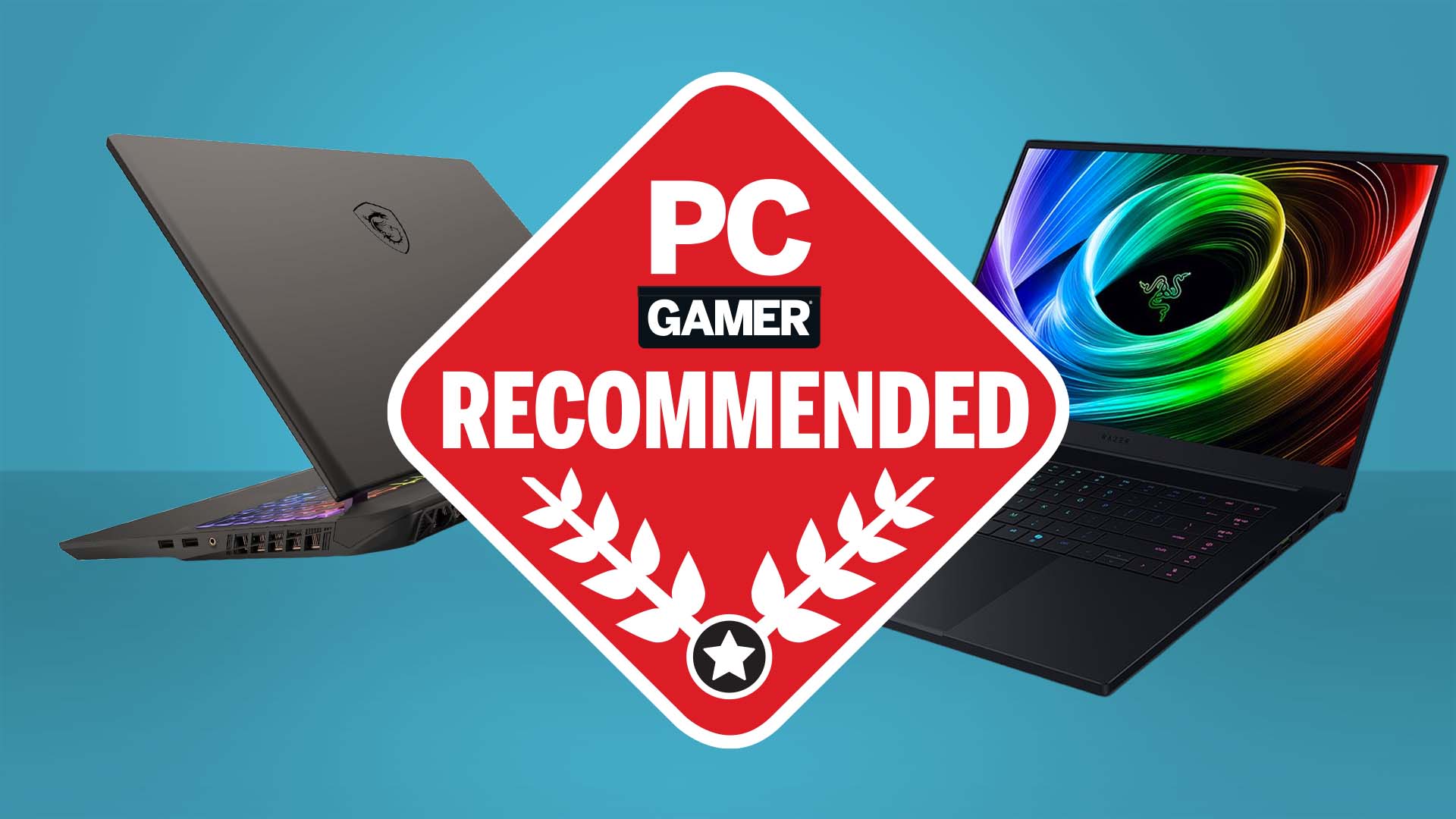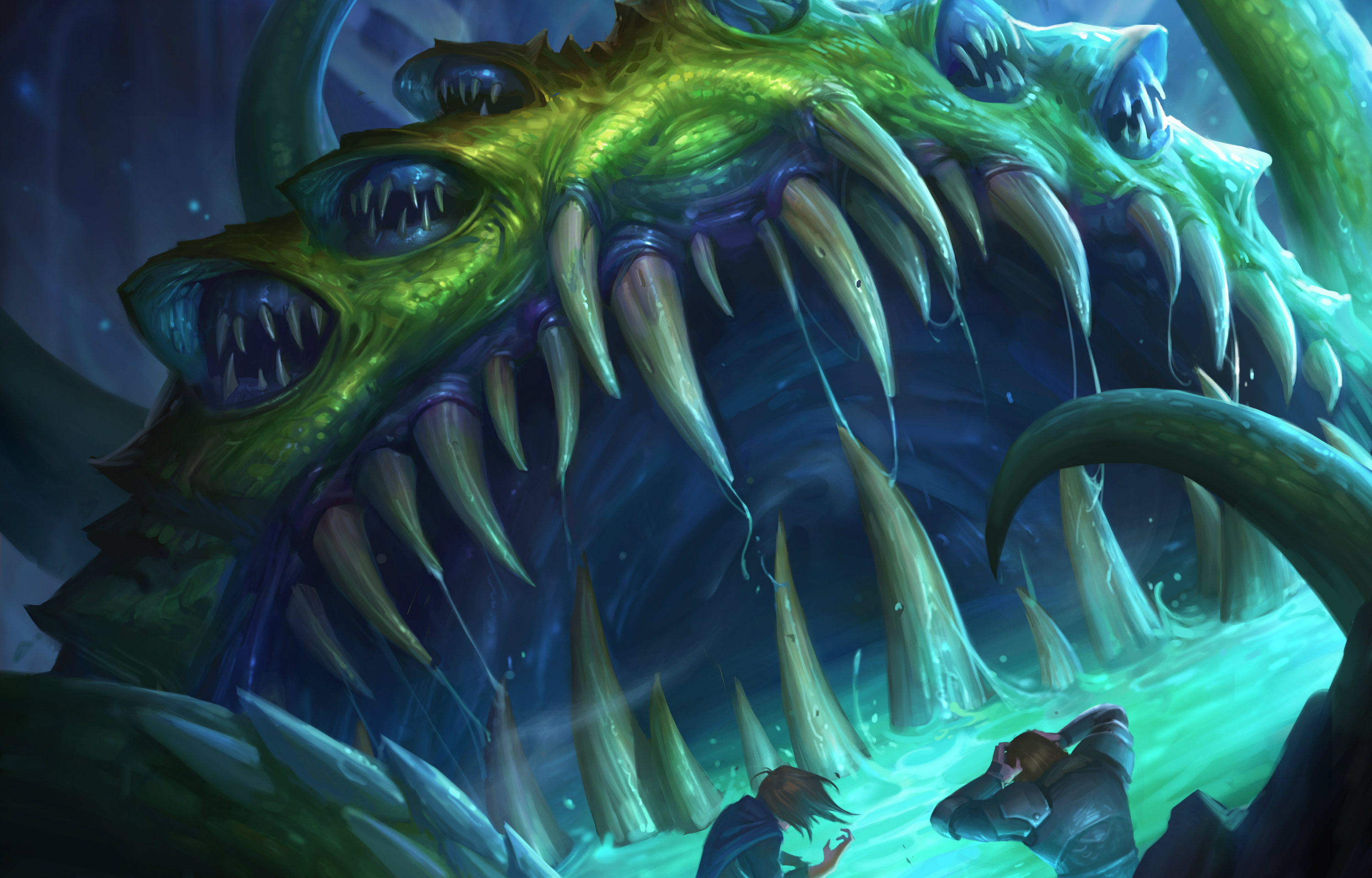
Yesterday saw the arrival of a balance patch for Hearthstone which, aside from temporarily breaking the game, nerfed seven cards that had been deemed problematic for various reasons. The shock was not that it took Blizzard so long to make the changes, but that it made the changes at all. When it comes to balance, the developers at Team 5 have long opted for a policy of non-interventionism that would make Switzerland blush. Rather than alter cards, they prefer to wait and see if the meta self-corrects as players come up with counters to whatever the degenerate deck of the day is.
If that approach fails—and as we saw with Undertaker Hunter, it often does—the developers can now point to the fact that troublesome cards from expansions, like Piloted Shredder and Sludge Belcher, are rotated out when the Standard mode refreshes each year. The problem there is that, depending on when the set was released, it can mean suffering a reign of terror lasting up to almost two years. Which is a long time to spend dealing with the likes of Dr Boom and Mysterious Challenger, neither of which Blizzard saw fit to alter at all, despite both clearly being overpowered
Community unrest
Increasingly, players don’t think the hands-off approach is good enough. The price of any hugely successful online game is invariably a community that’s vocal about perceived failures on the part of the people making the game they love. And it’s easy to be distracted by noisy pockets of fandom on platforms like r/hearthstone, whilst ignoring the quieter but perhaps calmer majority. But I don’t think that washes with Hearthstone now. Everywhere I’ve looked recently the consensus has been that something is seriously wrong.
Team 5 have long opted for a policy of non-interventionism that would make Switzerland blush.
The sense is that Hearthstone has become too geared towards aggressive, tempo-based decks, at the expense of combo and control strategies. Ultimately, the ladder meta hasn’t adapted to truly counter monotonous but powerful decks like Dragon Warrior and Aggro Shaman, just as it never truly adapted to disarm Secret Paladin or Undertaker Hunter. (Incredibly, it took Blizzard six brutal months to accept Undertaker needed a nerf.) And you only have to look at the brouhaha over the state of the Priest class earlier this year to see players crying out for Blizzard to do something, anything, to improve class balance. To which Blizzard’s response was, frustratingly, that “there will be always be a class that is ninth”.
Team 5’s other argument against more regular changes has been that they risk confusing lapsed players who return to find cards in their collection don’t work how they used to. But whilst there’s doubtless some truth there, I’m not sure that when weighed against the overall health of the game for regular players, the price is one worth paying. Or to put it another way: we coped with extra deck slots, we can handle more frequent card changes. So it was no surprise that when these nerfs were announced, far from any sort of outrage, the response was rapturous applause.
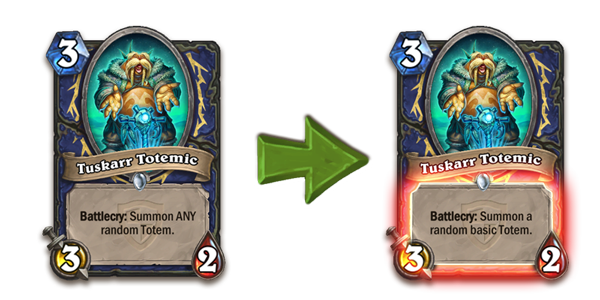
Most players knew that Tuskarr Totemic was broken from the moment they saw it, and things only got worse when Vitality Totem rotated out, making it even more likely that the Shaman would roll a free Totem Golem or Mana Tide Totem as early as turn two. Cards with that kind of insane variance when it comes to value—hello, Yogg—have also been hugely damaging to the competitive scene, so it’s maddening that it took more than a year for Tuskarr to be altered. Especially when the fix was so obvious.
Other than the reduction in power level for some obnoxious cards, here’s what else is great about these new nerfs:
Keep up to date with the most important stories and the best deals, as picked by the PC Gamer team.
1. They’re balance changes, not card deletions
Prior to this patch, the last big change was to Warsong Commander, which wasn’t so much nerfed as nuked from orbit. In the process, the powerful but complex to play Patron Warrior deck was gimped. Rather than explore the space between overpowered and unplayable, Blizzard made the problem go away for good by gutting the card. The same was true of the change to Ancient of Lore, one of Druid’s strongest and most flavourful cards, which is now a pale shadow of the cheaper, neutral Azure Drake, and played in precisely no decks. But with these nerfs, cards like Charge, Abusive Sergeant, Execute and even Yogg are weaker but still viable. It’s a dramatically different approach.
2. Blizzard didn’t just nerf the obvious cards
Speaking of Charge, I don’t think it was on anyone’s radar in terms of anticipated nerfs. Obviously the tweaks to Leeroy Jenkins and Warsong Commander demonstrate how problematic Blizzard views that mechanic, but the solution—which reduces the card’s cost, while preventing the creature from attacking the opponent’s face—is really interesting, and may even reinvigorate Patron Warrior. More of this method please.
3. The number of nerfs hopefully points to a more active approach
Whilst changes to Yogg and one of either Rockbiter Weapon or Doomhammer weren’t entirely unexpected, given the volume of complaints, no-one was expecting Blizzard to rebalance so many cards. That they did is exciting in itself. Even small alterations have the potential to shift the meta substantially. The last time Blizzard made a wave of changes was just before Standard launched, and the excitement they generated wasn’t far off the hype for the new set. Far from being dangerous to the game, almost anything that alters the status quo has an energising effect.
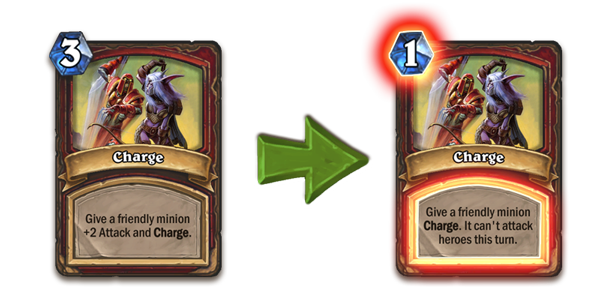
It’s that last point that I think is the most interesting. Watching the reaction to this balance patch, my hope is that Blizzard takes the lesson that intervening can be hugely positive. I saw the suggestion made several times that Team 5 should take inspiration from IceFrog, the mastermind behind Dota 2’s balancing, and make regular but small changes. Then see what sticks. The result would surely be a more dynamic, vibrant game in which the meta spent a lot more time in flux, rather than being “solved”.
I still want to see Blizzard experiment with power levels and exciting effects.
With that said, even a radically more active approach to balance won’t cure all of Hearthstone’s issues. The simplicity of the game’s systems means that playing the highest value creatures as early as possible will always be a strong strategy. (My initial suspicion after this patch is that our Aggro Shaman overlords may end up just being replaced by Beast Druids, which won’t feel like much progress.) That situation is compounded by the fact Blizzard no longer seems interested in printing new board clear spells.
The worry with Wild
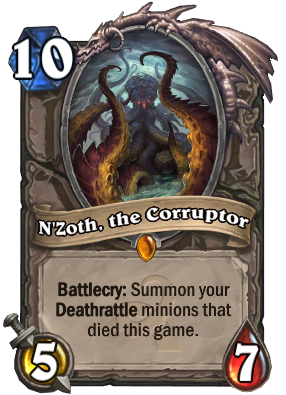
In Wild, N'Zoth's value will only rise as new Deathrattle cards get printed. At some point, Blizzard will surely have to address the card, even if it's not overpowered yet.
There are other problems lurking in the wings too. I’ve enjoyed playing Wild quite a bit over the last couple of months, but the fact N’Zoth will exist forever in that mode will ultimately have a chilling effect on deck design. There’s just no reason not to include the card, plus the usual Deathrattle suspects, in any deck that expects to survive until turn ten. At some point a tough decision is going to have to be made about another Old God.
The fact Blizzard is still tweaking classic cards like Abusive Sergeant also points to there still being concerns with the Classic set. But here’s the good news: Blizzard’s Ben Brode has stated several times that this is only their first go at making Standard work. There’s nothing to say the next rotation won’t take a different route, which may include the creation of some form of core set, (bring back Loatheb please), or something even more radical.
That’s for the future. For now, I’m more energised about playing Hearthstone than I have been in some time. This needs to be the beginning of a new, more actively interventionist approach to balance. I don’t want to do more interviews in which Blizzard developers dance around why a ridiculous deck has been allowed to dominate for months. The problem isn’t creating cards like Mysterious Challenger, Undertaker or Tuskarr Totemic—I still want to see Blizzard experiment with power levels and exciting effects. But when a situation clearly gets out of hand, the reaction should be swift. Hopefully this week’s changes are the start, and not the exception.
With over two decades covering videogames, Tim has been there from the beginning. In his case, that meant playing Elite in 'co-op' on a BBC Micro (one player uses the movement keys, the other shoots) until his parents finally caved and bought an Amstrad CPC 6128. These days, when not steering the good ship PC Gamer, Tim spends his time complaining that all Priest mains in Hearthstone are degenerates and raiding in Destiny 2. He's almost certainly doing one of these right now.

